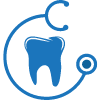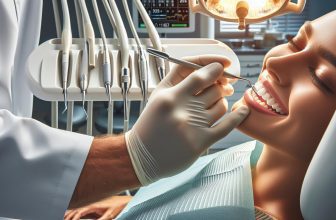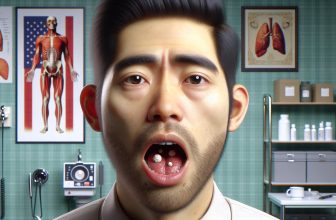
Ever wondered what laughing gas does at the dentist? Picture this: you’re in the dental chair, gripping the armrests like they’re your lifeline, and then, suddenly, you feel a wave of calm and maybe even a giggle or two. That’s the magic of laughing gas. It’s not just a clever name; it’s a game-changer for anyone who dreads dental visits.
Key Takeaways
- Laughing Gas Eases Anxiety: Known as nitrous oxide, laughing gas helps patients relax and reduces anxiety during dental procedures, making visits less stressful.
- Quick Onset and Recovery: Administered via a nasal mask, the gas starts working within minutes and wears off quickly, allowing patients to resume normal activities right after their appointment.
- Pain Management: Laughing gas offers mild pain relief, making it effective for pain-sensitive procedures without the need for needles or injections.
- Minimal Side Effects: While generally safe and widely used, common side effects can include mild dizziness, nausea, and tingling sensations, with rare complications such as allergic reactions and vitamin B12 deficiency.
- Patient Eligibility: Suitable for most patients, including children and adults, but contraindicated for individuals with specific health conditions like COPD, ear infections, and certain psychiatric disorders. Special care should be taken for pregnant women and the elderly.
Understanding Laughing Gas
Laughing gas, also known as nitrous oxide, helps ease anxiety during dental procedures. It creates a sense of calm and can even make patients laugh. Dentists use it for those who feel nervous. This gas provides a relaxing experience without the need for stronger sedation.
Administering laughing gas involves placing a small mask over the nose. Patients then breathe in the gas mixed with oxygen. This method begins working within minutes. The effects wear off quickly once the mask is removed, allowing patients to continue their day normally.
It doesn’t require an injection, making it more appealing to those afraid of needles. The gas leaves patients feeling light, happy, and less apprehensive about dental work. This sedation technique also has minimal side effects compared to other forms of sedation.
Patients of all ages, from children to adults, can benefit from laughing gas. Dentists frequently recommend it for longer procedures or more complex dental work. Being a safe and controlled form of sedation, laughing gas ensures a smooth and comfortable dental visit.
How Laughing Gas Works
Laughing gas, or nitrous oxide, is commonly used in dental practices to help patients relax. It provides a comfortable, needle-free sedation method that wears off quickly.
The Chemical Composition
Nitrous oxide is a colorless, non-flammable gas with a slightly sweet odor. Composed of two nitrogen atoms and one oxygen atom (N2O), it is an easily inhaled gas. Nitrous oxide is typically stored in pressurized containers. When administered, it’s mixed with oxygen for safe inhalation. The mixture usually consists of around 30-70% nitrous oxide. Dentists use a nasal mask to deliver the gas. They adjust the levels based on individual patient needs. The gas induces its effects rapidly, making it ideal for short procedures.
How It Affects the Body
Once inhaled, nitrous oxide quickly reaches the brain. It interacts with neurotransmitters to induce a sense of calm. Patients often describe feeling light, happy, and less anxious. Nitrous oxide also has mild pain-relieving properties. The gas helps reduce sensitivity to discomfort during dental procedures. Respiratory and cardiovascular systems remain stable, as the gas does not depress these functions significantly. Its effects wear off almost immediately once the mask is removed, allowing patients to recover quickly and return to normal activities without extended downtime.
Benefits of Using Laughing Gas at the Dentist
Laughing gas at the dentist offers multiple benefits. It serves as a needle-free option that makes dental visits more pleasant.
Pain Management
Patients experience effective pain management with laughing gas during procedures. Nitrous oxide has mild analgesic properties, helping reduce pain without invasive methods. This is especially helpful for minor dental work. Dentists can adjust the gas level to control the degree of pain relief. Unlike local anesthesia injections, it provides a painless alternative. Children and adults alike find relief without fear of needles. Additionally, it keeps the respiratory and cardiovascular systems stable, ensuring minimal risk. Laughing gas allows dentists to perform pain-sensitive procedures while keeping patients comfortable. This method benefits those with a low pain threshold or high dental anxiety.
Anxiety Reduction
Laughing gas significantly reduces anxiety during dental visits. Administering nitrous oxide helps calm nervous patients quickly. This is because it interacts with neurotransmitters to induce relaxation and even laughter. Patients feel more at ease, making the entire process less stressful. Dental fear often prevents people from seeking necessary care. Laughing gas addresses this by providing a stress-free experience. It’s also safe for patients of all ages, allowing even children to remain calm. Dentists can adjust the gas concentration, ensuring personalized care. This method enhances patient cooperation and makes dental treatments smoother. Anxiety reduction with laughing gas results in a more pleasant visit.
Quick Recovery Time
Patients benefit from a quick recovery time after using laughing gas. Effects wear off almost immediately once the mask is removed. Unlike other sedation methods, there are no lingering drowsiness effects. Patients can resume their normal activities shortly after the appointment. This is particularly beneficial for those with busy schedules. Children can return to school, and adults can go back to work without delay. Dentists appreciate this quick turnaround as it improves clinic workflow. Patients don’t require someone to drive them home, unlike with heavier sedation. The efficiency and convenience make laughing gas a preferred choice. Quick recovery time ensures minimal disruption to daily life.
Safety and Side Effects
Laughing gas is a common and generally safe sedation method for dental procedures. However, like any medical intervention, it may come with some side effects and rare complications.
Common Side Effects
Patients often experience mild dizziness or light-headedness right after inhaling the gas. Some feel a tingling sensation in their arms or legs. It’s not unusual for patients to have a feeling of euphoria or uncontrollable laughter, hence the name “laughing gas.” Nausea can occur, especially if patients have a sensitive stomach or haven’t followed pre-procedure instructions. Occasionally, patients might feel a slight headache once the mask is removed. These side effects usually fade quickly after the gas is stopped, within a few minutes to an hour.
Rare Complications
In rare cases, more serious complications can occur. Some individuals might have an allergic reaction to nitrous oxide, leading to symptoms like difficulty breathing, swelling, or rash. Though rare, overexposure to the gas might lead to vitamin B12 deficiency, especially in patients with existing health conditions affecting their nutrient absorption. Another uncommon complication includes middle ear issues, like pressure buildup, in those with ear problems. Sometimes, patients might experience excessive sweating or shivering. It’s vital to discuss any existing health concerns with the dentist before the procedure to minimize these risks.
Who Should Avoid Laughing Gas
While laughing gas is generally safe and effective, certain individuals might need to avoid its use. Identifying these cases enhances safety and ensures a positive dental experience.
Contraindications
Certain medical conditions make laughing gas unsuitable. Patients with chronic obstructive pulmonary disease (COPD) risk complications when using laughing gas. Pregnant women, particularly in their first trimester, should avoid it due to potential risks to the developing fetus.
Individuals with a history of substance abuse might experience negative reactions. Vitamin B12 deficiency is another contraindication since nitrous oxide can exacerbate this condition. Patients with psychiatric disorders like bipolar disorder or schizophrenia are advised against using laughing gas as it can trigger or worsen symptoms.
Individuals with ear infections or sinus problems may experience increased pressure, leading to discomfort or pain. Lastly, those who have shown prior allergic reactions to this sedative should not use it.
Special Considerations
Special care must be taken with certain groups. Children, due to their smaller size and developmental status, need precise dosing to avoid over-sedation. Elderly patients may have underlying health conditions that require careful evaluation before administering laughing gas.
Patients with heart conditions need thorough assessment since nitrous oxide can affect blood pressure and heart rate. Diabetics also require close monitoring during the procedure as stress and sedation can influence blood sugar levels.
Obesity can affect the distribution and elimination of laughing gas, thus requiring adjustments in the dosing. Lastly, individuals with respiratory infections, such as colds or flu, should postpone procedures involving laughing gas until fully recovered to prevent additional strain on their breathing.
Careful consideration of these factors ensures the safe and effective use of laughing gas during dental procedures.
Conclusion
Laughing gas plays a vital role in modern dentistry by making procedures more comfortable and less stressful for patients. Its quick onset and minimal recovery time make it an excellent choice for many. However, it’s essential to consider individual health conditions and communicate openly with your dentist to ensure its safe use. By understanding both the benefits and potential risks, you can make informed decisions about your dental care.
Frequently Asked Questions
What is nitrous oxide, and how is it used in dental procedures?
Nitrous oxide, commonly known as laughing gas, is used to reduce anxiety and induce relaxation during dental procedures. Administered through a mask, it helps patients remain calm and comfortable.
Is nitrous oxide safe for all ages?
Yes, laughing gas is considered safe for patients of all ages, from children to the elderly, making it a versatile option in dental care.
How quickly does one recover from nitrous oxide?
Recovery from laughing gas is typically quick. Most patients feel normal within minutes after the mask is removed.
What are the common side effects of laughing gas?
Common side effects include dizziness, nausea, and a feeling of euphoria. These effects are usually mild and short-lived.
Are there any serious risks associated with nitrous oxide?
Serious risks are rare but can include allergic reactions and potential nutrient deficiencies, particularly with prolonged or repeated use.
Who should avoid using nitrous oxide?
Patients with COPD, pregnant women in their first trimester, individuals with a history of substance abuse, vitamin B12 deficiency, or certain psychiatric disorders should avoid laughing gas.
Can children safely use laughing gas?
Yes, with proper administration, children can safely use laughing gas to ease anxiety and discomfort during dental procedures.
Are there any special considerations for elderly patients?
Elderly patients might need adjusted dosages, and their overall health must be evaluated to ensure safe use of nitrous oxide.
What precautions should be taken for patients with heart conditions or diabetes?
Patients with heart conditions or diabetes should discuss their medical history with their dentist to determine if laughing gas is a suitable option.
How can patients minimize risks associated with laughing gas?
Patients should communicate their full medical history and any health concerns with their dentist to minimize potential risks and ensure safe administration of nitrous oxide.








